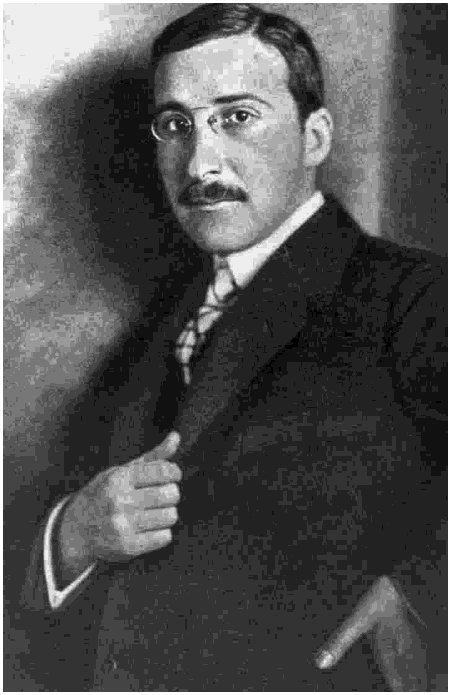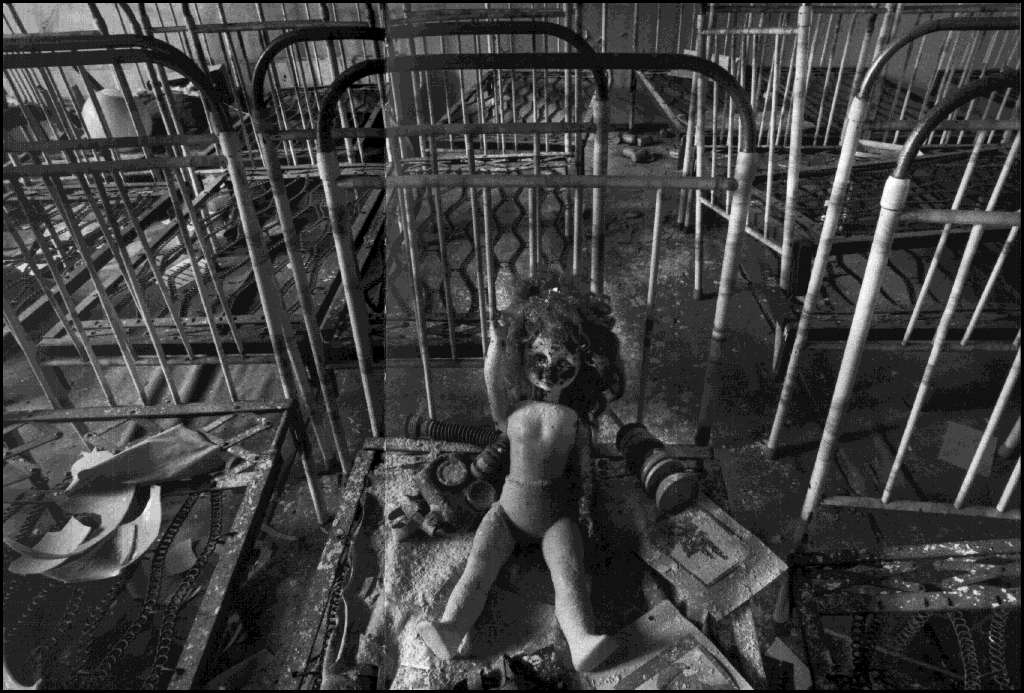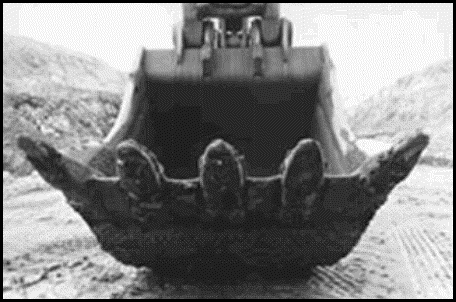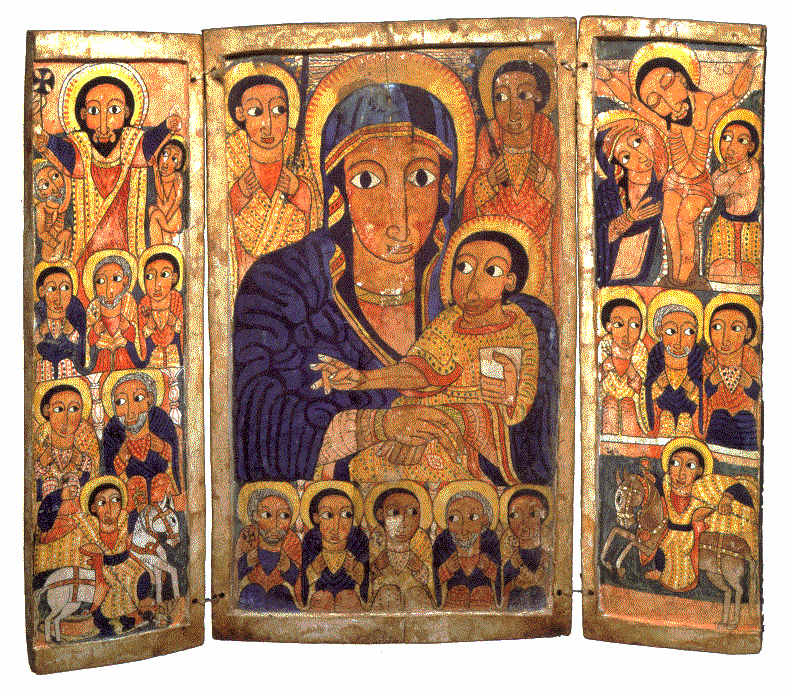Architectural Relics from
A Vanishing Past
John Margolies
Jim Heimann, Editor
(Taschen)
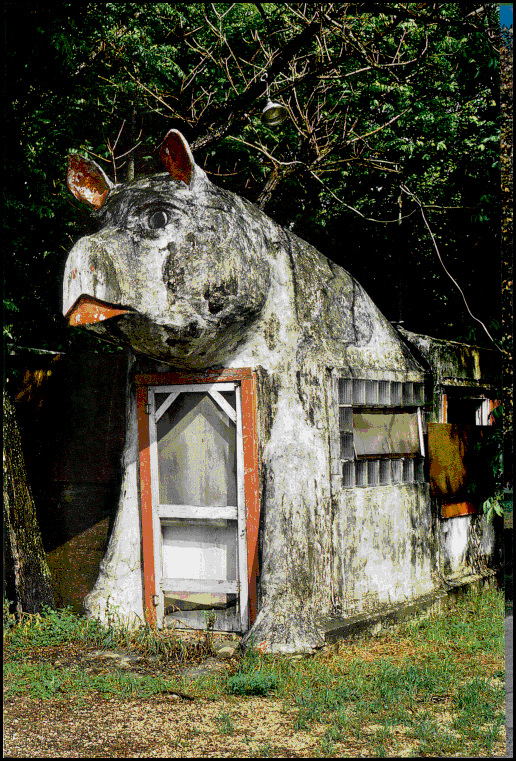
Margolies' fans will appreciate this, for we need no arty commentators to interpret the five massive green dinosaurs at the Indian Rock Shop in Holbrook, Arizona; the many white teepees at the Wigwam Village Motel of Cave City, Kentucky; the stupendous fish-eats-building Big Fish Supper Club in Bona, Minnesota --- which appears on the book-cover --- or the sad black-and-white photo of the fall-apart Coca-Cola shack in Selma, Alabama, taken so long ago: taken by one of the aesthetic twins to Margolies, one Walker Evans.
review
Henry Miller
(New Directions)
In all his works, he repeats the same anti-bourgeoisie refrain: I am poor as a tramp, I have no possessions, no responsibilities, no job, no assurance of anything, and --- because of that --- I am the happiest man alive. Joy is at the core of all of Miller's major works.
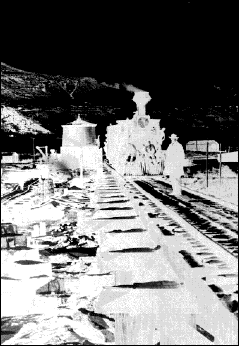
On the surface it is Grainier's story of being left off as a youngster in Fry, Idaho in 1890 or so --- never having known father nor mother --- growing up with cousins in the panhandle with the trains and the loggers and the Indians (who they consulted) and the Chinese (who they tried to run out of town) and, when he is thirty, meeting with Gladys and moving her to his lot outside of town.
When he is off doing construction or logging, one of those great fires that used to storm through the Pacific Northwest comes through and consumes his hand-built shack and poor Gladys and sweet baby Kate.
Grainier goes back to rebuild on the lot and this is just the bare-bones story but there is something else going on here, a lyric story of early 20th Century America told with loving care and you can't exactly figure out how Johnson does it: Is it the disjointed flow of the narrative? Is it the laconic speech of the times? Is it a vocabulary mixed with such style that --- long after the fire took his child and his love with it --- Grainier can be lying by the river, and "his eye caught on a quick thing up above, flying along the river? "He looks, and saw his wife Glady's white bonnet sailing past overhead. Just sailing past."
review
Adventures in Deviant Journalism
Mark Morford
(Rapture Machine)
-
and by the way please bury your true sexuality and get married at 23 and pop out six kids and become quickly and quietly miserable and gain 30 pounds and stop having sex entirely and get divorced at 50 and wake up just in time to watch yourself die.
Or this, about killing seals in the Arctic, which starts out: "Let us all agree right now. Baby harp seals --- those doe-eyed sausagelike bundles of puffy white blubber --- are just so phenomenally, face-meltingly cute. So adorable and so helpless and so sweet-looking it's like God took Bambi and sawed off all his legs and put him in a white fluffy parka and crossbred him with a puppy and a Marshmallow Peep and tossed him out onto the Arctic ice to pose for Polar Baby Gap."
And the twister at the end: "I mean cute."
Morford, need we point out, is the real patootie: flat-out, full-throttle, skid-across-the-asphalt pop-'em-in-the-eye club-'em-in-the-brains knee-'em-in-the-gut journalism. At its most fragrant.
review
Traversing the Path of the Buddha
Ringu Tulku
(Snow Lion)
Great. Now none of us have to think bad thoughts about Bush, or Rumsfeld, or Karl Rove. Some day, sometime after they have gone to what they are thinking of as the land of milk and honey, they're gonna get it, and get it good. Angels need not apply.
review
The Art of Mission San Xavier del Bac
Bernard L. Fontana
Edward McCain, Photographer
(University of Arizona Press)
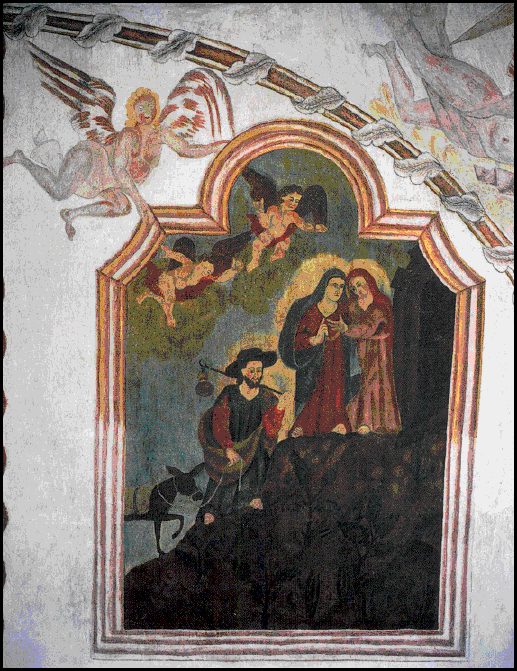
The author knows his stuff. As an example, take the particulars of the Visitation which is pictured on two of the walls in San Xavier. In 1670, a nun, Mother María Jesús de Agreda, wrote her version of it in a book Mística Ciudad de Dios, inspired, it is said, by direct communication by the divine. Pope Innocent XI, in keeping with the sourpuss tradition of all Popes named Innocent --- viz, the Crusades --- condemned innocent María's version of heavenly conjoining ... and she was forced to burn all her writings on the subject, if not herself.It was too late, The Mystical City of God became the Danielle Steele hit of the 17th Century, and the good mother nun's take on the Visitation inspired the artists at San Xavier del Bac to paint a scene of Joseph appearing with a fedora on head and a run-away-from-home stick-&-sack on his back --- along with Mary, their Cousin Elizabeth, two plump angels, a merry burro and a sagaro cactus ... as befits a hot Visitation in the hot Sonoran Desert. The whole is supported by a bediapered angel hovering there in the sanctuary, smiling at us all at his or her sacred mission to keep the Visitation floating merrily before our very eyes, perhaps forever.
Go to the full
reviewGhost Light
A Novel
Joseph O'Connor
(Farrar, Straus and Giroux)It's a haunting story, and O'Connor has a writerly touch like his contemporaries ... J. P. Donleavy, Aidan Higgins, Adrian McKinty, and sweet Jamie O'Neill. Like them, he knows how to tell a rousing story, make an even better neo-Victorian dialogue. This is Synge alone with his mother: "Teasy Ryan was able to tell me that you had been seen at Greystones. Swimming..."
"She is a friend. It was sunny. We went bathing at the public strand. She is a colleague at the theatre. Afterwards we had ices. Now you have the entire penny-dreadful."
"I knew it. your so-called theatre. Some little typist who sells tickets. I imagine she must be good and proud of herself to have ensnared you quite so readily. One need not speculate as to how."
"She is not a typist, Mother. You may as well know she is an actress."
Her frightened, beautiful face seems to lose all its color, and a quiver briefly distends her mouth. "So it is true, then. The worst is true. Do you hate me so much? The woman who gave you life?"
Go to the full
reviewAmerica in
The Sixties
John Robert Greene
(Syracuse University)I used to think that I would prefer to spend an evening watching the "700 Club" instead of reading a potted history book, but because of this volume --- all detailing my salad years --- I have been converted (not to fundamentalism but to a brand of easy history as represented by the agile pen of John Robert Greene). He captures so much of those years with not only a reportorial flair, but with a contrarian point of view. For example, we all thought of Eisenhower as no more than a pleasant golfer, but Greene claims that he had a shrewd foreign policy --- refusing to get involved in the Suez controversy, limiting assistance to the Diem government in Vietnam, doing what Kennan called a "containment" of the Russians (although it scared us half to death).
The author has an Op-Ed view of the world from back then, and a hero like Martin Luther King doesn't come out too well, what with his indecisiveness, and "his plan to use elementary and high school students in the next march on Birmingham."
There was absolutely no question that some of these youngsters would be hurt and possibly killed when they faced [Bull] Connor's police.
Go to the full
reviewThe World
Of Yesterday
Stefan Zweig
Anthea Bell, Translator
(Pushkin Press)From the end of the Napoleonic era until the assassination at Sarajevo, the world according to Zweig was blissful, innocent, glorious. He and his friends would argue poetry and music and art in the pre-WWI coffee houses of Vienna. They would skip classes to read Rilke, listen to Schubert, memorize Goethe, declaim Shakespeare, study the newest "feuilletons." Then came the General Mobilization of 1914 ... which many of them cheered. During the hostilities, Zweig worked at the Austrian War Archives, and his journeys of research into Galicia and points east led him to travel on troop trains filled with the wounded and dying. It made him a life-long pacifist.
Afterwards, he wrote novels --- Amok, Because of Pity, Fantastic Night were some of the most famous --- and he tells us that his works "were translated into French, Bulgarian, Armenian, Portuguese, Spanish, Norwegian, Latvian, Finnish and Chinese." Through this period, until the end of his life, he longed for the lost Edwardian times ... where a Viennese coffee house was "the best cultural source for all novelty."
Go to the full
reviewA Return
To Servitude
Maya Migration and the
Tourist Trade in Cancún
M. Bianet Castellanos
(University of Minnesota)In some of her most fascinating chapters, Castellanos delves into the traditions of the near-by village of Kuchmil ... the customs and the language, family roles and the effect of their "migrations." Migration, she tells us, has become a new "life stage in addition to marriage and parenthood." Migration in Mexico has become part of the rural experience, making the ciudad central to the rural image, not only as a foil to the rural but also as an expanded sense of place.
This is a fine book, and the author (and I) would appreciate the irony of your taking it along with you on your next visit to the Yucatan. Perhaps to nibble on a bit between your next serving of shrimp and tequila there on the beach. With it, you'd know exactly how you are changing the lives of the unseen workers right there in front of your eyes.
Go to the full
reviewChernobyl
The Hidden Legacy
Pierpaolo Mittica
(Trolley Books)The facts are now well known. Nuclear reactor number four exploded on 26 April 1986 at Chernobyl, in the Ukraine. The radiation levels in the worst-hit areas of the reactor building have been estimated to be 5.6 roentgens per second which is equivalent to more than 20,000 roentgens per hour. A lethal dose is around 500 roentgens over 5 hours. Clouds of radioactive dust swirled across Russia, into Sweden and Norway and parts of England, and ultimately through the world (even areas of Canada and America were affected by May 6 of that year). Belarus was the worst hit, with 30% of its area contaminated, "stretching over 260,000 square kilometers of land (almost as large as Italy.)" It will, reports Mittica, "return to normal radioactive levels in about 100,000 years time. Almost 20 years have gone by, so we have another 99,980 to go."
Go to the full
reviewStone in
A Landslide
Maria Barbal
(Peirene Press)Conxa grows up in the Catalan countryside, before the Civil War. Her family is poor, so poor that when she is thirteen, she is given away to her mother's sister Tia. Tia is married to a relatively prosperous land-owner near Ermita. Ultimately, Conxa falls in love with Jaume, and he moves in to live with her new family.Much of the pleasure of A Stone in a Landslide is the art of Barbal telling the story, bringing it to life, and yet leaving out any unnecessary details. This is the sole comment on Conxa not being able to visit her family: "The roads were long and everyone was needed at home." And this is how Jaume proposed:
He said if I wasn't against the idea I should tell my family that he wanted to marry me and that he would return on Sunday evening to find out the answer.
And when they took Jaume away to shoot him --- he was a Republican; Franco's Falange had overrun Catalonia --- "before he'd even combed his hair, a hug. A goodbye. I didn't cry, but inside I felt as if they had wrenched my soul from my body."
Go to the full
reviewAbbott Awaits
A Novel
Chris Bachelder
(Louisiana State University Press)The girl sits on a bench and begins to put the stickers on her neck and throat. She peels off one after another and presses them onto her skin. "Shouldn't she at least save some of them?" he says, but nobody answers. When the girl's neck and throat are covered, she begins putting stickers on her chin and cheeks. She uses every single animal sticker, probably two dozen. She is delighted. She smiles as she touches her face lightly with the tips of her fingers. Go to the full
reviewThe Highway
Of the Atom
Peter C. van Wyck
(McGill-Queen's University Press)The Dene tribe of Canada had the singular misfortune of sitting atop a fortune. Next to Great Bear Lake in the North-West Territories there was (and presumably still is) a large outcrop of pitchblende.Pitchblende is the mother of radium, what author van Wyck identifies as "the most valuable commodity on earth" (during his narrative, the price topped out at $25,000/gram). It is also the half-brother of uranium.
The Dene, being a sensible folk, were not interested in building bombs to flay innocent citizens, so the pitchblende was ignored; indeed, they stayed away from it. According to a report in Macleans magazine, it was to be avoided mostly because it smelled bad: "Indians of the area traditionally insisted that there was a peculiar smell to the atmosphere at LaBine Point."
Naturally, "this caused some merriment especially since our white man could not spot the alleged scent at all," reported Macleans.
Go to the full
reviewVisitationJenny Erpenbeck
(New Directions)The beauty here is in the writing. This on the children playing: they "hide in the secret closet in her room under the coats and dresses or go to his house, where the television would be on even during the day, and watch the black and white cowboys galloping across a black and white plain and eventually their black and white falling down and dying."Or, when one of the "subtenants" finds --- anonymous call --- that she has a sister, one that she has never known, so
Any older woman sailing past her on a boat might be her sister. Or the madwoman who always pushes around an empty shopping cart in the nearby spa town, mumbling curses. A woman sitting in a café with a piece of cake. An energetic sixty-something seeking a non-smoking man in a classified ad, or else some scrawny old biddy in Berlin.
There are the asides, which are wonderful: "Happiness grows out of disorder, just as infinity grows out of the finite lake on which he is now turning his back."
Go to the full
reviewFull of Grace
Encountering Mary in
Faith, Art, and Life
Judith Dupré
(Random House)Mary had a tough call. The angel appears and tells her that she's going to be the Mother of God. If someone had appeared and told me to do that, I certainly would have said 'no.' Or better, 'No!'It can be (and is) a very demanding job, being the Holy Virgin. And ultimately, I think, it's fruitless.
You have to put up with all those questions from your family and friends. "He told you what?" Plus there is the business of finding an appropriate delivery room, which in this case turned out to be a stable with manger with all these animals mooning (and mooing) about.
Then there's the matter of the illegal immigrants arriving, in their turbans and robes, telling you they've come to worship you and your babe. It would be a time to try one's soul.
Plus you know what they do to the prophets and Saviors of the world: ask Buddha (poisoned), Socrates (enforced suicide), Zarathustra (murdered at the altar). First they kill you; then they sanctify you. It's no bed of roses being a divine, perhaps even worse being a Divine Mother.
Go to the full
review
